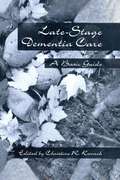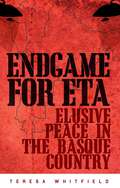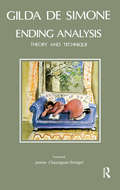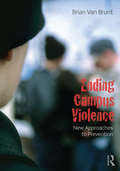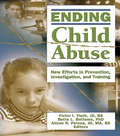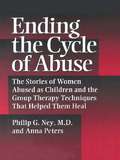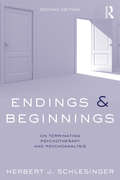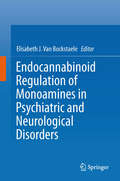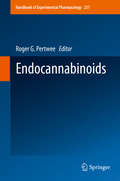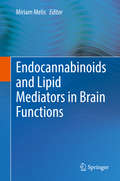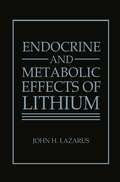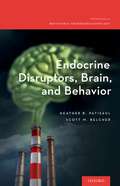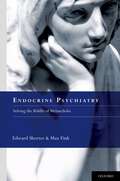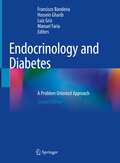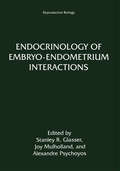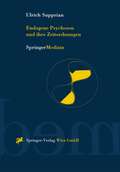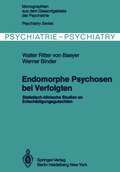- Table View
- List View
The End of Your Life Book Club
by Will Schwalbe'A wonderful book about wonderful books and mothers and sons and the enduring braid between them.' - Mitch Albom, author of Tuesdays With Morrie'a true meditation on what books can do.' - Edmund de Waal, author of The Hare with Amber EyesMary Anne Schwalbe is waiting for her chemotherapy treatments when Will casually asks her what she's reading. The conversation they have grows into tradition: soon they are reading the same books so they can have something to talk about in the hospital waiting room. Their choices range from classic (Howards End) to popular (The Girl with the Dragon Tattoo), from fantastic (The Hobbit) to spiritual (Jon Kabat-Zinn), with many more in between. We hear their passion for reading and their love for each other in their intimate and searching discussions. The End of Your Life Book Club is a profoundly moving testament to the unconditional love between a child and parent, and the power of reading in our lives.
End-Stage Dementia Care: A Basic Guide
by C. R. KovachPeople with mid-stage dementia are served by special care units in long-term care facilities, although as these residents deteriorate, they are transferred out of the unit and into a general nursing home unit. These nursing homes are not equipped to deal with palliative needs of end-stage dementia care. The book addresses those needs. With this in mind, Part One examines the stages of dementia end-stage in particular. Other chapters in this section provide background on the hospice movement and hospice concepts; the idea of maintaining personhood; and administration of a late-stage care unit. Part Two focuses on treatment approaches for common needs in end-stage dementia - medical and physical care; a supportive environment; the fundamentals of care; psychopharmacology; and therapeutic activities. Part 3 contains chapters on family-centred care; legal and ethical issues; programme evaluation; and future opportunities.
End-Stage Dementia Care: A Basic Guide
by C. R. KovachPeople with mid-stage dementia are served by special care units in long-term care facilities, although as these residents deteriorate, they are transferred out of the unit and into a general nursing home unit. These nursing homes are not equipped to deal with palliative needs of end-stage dementia care. The book addresses those needs. With this in mind, Part One examines the stages of dementia end-stage in particular. Other chapters in this section provide background on the hospice movement and hospice concepts; the idea of maintaining personhood; and administration of a late-stage care unit. Part Two focuses on treatment approaches for common needs in end-stage dementia - medical and physical care; a supportive environment; the fundamentals of care; psychopharmacology; and therapeutic activities. Part 3 contains chapters on family-centred care; legal and ethical issues; programme evaluation; and future opportunities.
Ending Analysis: Theory and Technique
by Gilda De SimoneThis book, beyond dealing with the theoretical and technical questions concerning the termination of analysis, gives a picture of the particular nature of the psychoanalytic cure in relation to the therapies that have come forth from psychoanalytic roots. The theoretical work is supported by rich clinical details.
Ending Analysis: Theory and Technique
by Gilda De SimoneThis book, beyond dealing with the theoretical and technical questions concerning the termination of analysis, gives a picture of the particular nature of the psychoanalytic cure in relation to the therapies that have come forth from psychoanalytic roots. The theoretical work is supported by rich clinical details.
Ending Campus Violence: New Approaches to Prevention
by Brian Van BruntWith the growth of threats and violence in higher education settings, college campuses are increasingly expected to have systems in place to identify potentially aggressive individuals and intervene to ensure the safety of the campus population. This book will be useful for student affairs professionals as well as college counselors, psychologists, social workers interested in the practical management of aggression and violence on a college campus. It will also be a valuable resource for those involved in creating and running behavioral intervention teams and threat/risk assessment teams. Ten case studies from both the community and residential college settings provide a comprehensive overview of campus violence and how to intervene to prevent it. Pertinent background information is discussed as an introduction to these narratives, such as the fundamentals of aggression and violence on campuses; how these behaviors can impact students, faculty, and staff; and what can be learned from past campus violence. Along with discussion questions and a review of ways to approach each situation, experts in higher education, forensic risk assessment, law enforcement, and legal issues weigh in on each case study. Their perspectives offer a context and broad base of opinions and ideas on how each case could be handled. Additional examples for further training of the college counselor are given through a detailed look at almost 100 incidents of violence, including thwarted attacks, rampage shootings, and hostage situations.
Ending Campus Violence: New Approaches to Prevention
by Brian Van BruntWith the growth of threats and violence in higher education settings, college campuses are increasingly expected to have systems in place to identify potentially aggressive individuals and intervene to ensure the safety of the campus population. This book will be useful for student affairs professionals as well as college counselors, psychologists, social workers interested in the practical management of aggression and violence on a college campus. It will also be a valuable resource for those involved in creating and running behavioral intervention teams and threat/risk assessment teams. Ten case studies from both the community and residential college settings provide a comprehensive overview of campus violence and how to intervene to prevent it. Pertinent background information is discussed as an introduction to these narratives, such as the fundamentals of aggression and violence on campuses; how these behaviors can impact students, faculty, and staff; and what can be learned from past campus violence. Along with discussion questions and a review of ways to approach each situation, experts in higher education, forensic risk assessment, law enforcement, and legal issues weigh in on each case study. Their perspectives offer a context and broad base of opinions and ideas on how each case could be handled. Additional examples for further training of the college counselor are given through a detailed look at almost 100 incidents of violence, including thwarted attacks, rampage shootings, and hostage situations.
Ending Child Abuse: New Efforts in Prevention, Investigation, and Training
by Victor I. Vieth Bette L. Bottoms Alison PeronaGet the tools to coordinate a plan in your community!The highly anticipated Ending Child Abuse: New Efforts in Prevention, Investigation, and Training presents an exciting vision: to end or significantly reduce child abuse. Respected social scientists and legal scholars discuss empirically sound short- and long- term multidisciplinary strategies that can be implemented in our society. Innovative and well-established concepts and approaches are clearly presented, such as specialized education, rational preventative methods, effective investigation and prosecution strategies, and the analysis of factors that influence law enforcement investigations and child abuse prevention efforts.Several obstacles stand in the way of the elimination of child abuse, such as the failure to investigate most child abuse reports, inadequate training of frontline child protection professionals, lack of financial resources, and the dilemma that child abuse is not addressed at the youngest ages. Ending Child Abuse: New Efforts in Prevention, Investigation, and Training tackles these problems and others with practical guidelines and aggressive creative strategies that can be applied to every community in the United States. This collection is impeccably referenced and soundly supported with research.Ending Child Abuse: New Efforts in Prevention, Investigation, and Training discusses: implementation of a model curriculum in child advocacy for undergraduate and graduate institutions forensic interview training extensive education of the nation&’s child protection professionals development and funding of prevention programs at the community level educational reforms of Montclair State University in New Jersey designed to better prepare professionals who advocate for children research-based interview techniques with best practice guidelines possible broader social and system-level reforms vertical prosecution of child abuse cases-with a model for its operationEnding Child Abuse: New Efforts in Prevention, Investigation, and Training is an ambitious eye-opening source perfect for social services professionals, mental health professionals, practitioners, researchers, educators, students, and medical and legal professionals who deal with child abuse and children&’s welfare.
Ending Child Abuse: New Efforts in Prevention, Investigation, and Training
by Victor I. Vieth Bette L. Bottoms Alison PeronaGet the tools to coordinate a plan in your community!The highly anticipated Ending Child Abuse: New Efforts in Prevention, Investigation, and Training presents an exciting vision: to end or significantly reduce child abuse. Respected social scientists and legal scholars discuss empirically sound short- and long- term multidisciplinary strategies that can be implemented in our society. Innovative and well-established concepts and approaches are clearly presented, such as specialized education, rational preventative methods, effective investigation and prosecution strategies, and the analysis of factors that influence law enforcement investigations and child abuse prevention efforts.Several obstacles stand in the way of the elimination of child abuse, such as the failure to investigate most child abuse reports, inadequate training of frontline child protection professionals, lack of financial resources, and the dilemma that child abuse is not addressed at the youngest ages. Ending Child Abuse: New Efforts in Prevention, Investigation, and Training tackles these problems and others with practical guidelines and aggressive creative strategies that can be applied to every community in the United States. This collection is impeccably referenced and soundly supported with research.Ending Child Abuse: New Efforts in Prevention, Investigation, and Training discusses: implementation of a model curriculum in child advocacy for undergraduate and graduate institutions forensic interview training extensive education of the nation&’s child protection professionals development and funding of prevention programs at the community level educational reforms of Montclair State University in New Jersey designed to better prepare professionals who advocate for children research-based interview techniques with best practice guidelines possible broader social and system-level reforms vertical prosecution of child abuse cases-with a model for its operationEnding Child Abuse: New Efforts in Prevention, Investigation, and Training is an ambitious eye-opening source perfect for social services professionals, mental health professionals, practitioners, researchers, educators, students, and medical and legal professionals who deal with child abuse and children&’s welfare.
Ending The Cycle Of Abuse: The Stories Of Women Abused As Children & The Group Therapy Techniques That Helped Them Heal
by Philip G. Ney Anna PetersFirst published in 1995. Routledge is an imprint of Taylor & Francis, an informa company.
Ending The Cycle Of Abuse: The Stories Of Women Abused As Children & The Group Therapy Techniques That Helped Them Heal
by Philip G. Ney Anna PetersFirst published in 1995. Routledge is an imprint of Taylor & Francis, an informa company.
Endings and Beginnings: On terminating psychotherapy and psychoanalysis
by Herbert J. SchlesingerIn this second edition of Endings & Beginnings (Routledge, 2006), Herbert J. Schlesinger explores endings and beginnings within psychoanalysis and psychoanalytic therapy; both the obvious main endings and beginnings of any course in treatment, and the many little endings and beginnings that permeate analysis. The second edition contains new chapters including one on transference and counter-transference as sources of information about the process of therapy and as sources of difficulty in ending. It deals especially with the impact of prospective ending on the therapist, which if not understood and well handled, might interfere with working through and impede termination, if not ending itself. Another new chapter deals with the difficulties in terminating with especially narcissistic patients. One of the main criticisms against psychoanalysis and the psychotherapies derived from it is that it lacks criteria for when the patient has had enough. Herbert J. Schlesinger shows how we may view the process as a series of episodes each with an ending and possibly with a new beginning. He presents the way patients signal, even before they are aware of it, that ending is "in the air," and how it organizes how they experience the therapy. If alerted, the therapist can make use of these signals to locate self and patient in the process. So informed, the therapist is better able to discern when the therapy should end and help the patient work through the issues of separation and loss to terminate the treatment constructively. All patients tend to end psychotherapy in the way they end all other relationships. In several chapters on the problems related to severe regression, therapists can learn how to help vulnerable patients, for whom attachment is problematic, deal with separation non-traumatically. In Endings & Beginnings 2nd Edition, the theory of the continuous experience of ending and beginning and the array of landmarks that parse the clinical process are distinct advances to the technique of psychoanalysis and the psychotherapies derived from it. Schlesinger offers many clinical examples of ending and beginning with their technical problems and solutions. This contribution to the technique of ending and beginning psychotherapy electively will be useful to practicing psychotherapists and psychoanalysts, and to undergraduate and post-graduate students in clinical psychology, psychiatry and social work.
Endings and Beginnings: On terminating psychotherapy and psychoanalysis
by Herbert J. SchlesingerIn this second edition of Endings & Beginnings (Routledge, 2006), Herbert J. Schlesinger explores endings and beginnings within psychoanalysis and psychoanalytic therapy; both the obvious main endings and beginnings of any course in treatment, and the many little endings and beginnings that permeate analysis. The second edition contains new chapters including one on transference and counter-transference as sources of information about the process of therapy and as sources of difficulty in ending. It deals especially with the impact of prospective ending on the therapist, which if not understood and well handled, might interfere with working through and impede termination, if not ending itself. Another new chapter deals with the difficulties in terminating with especially narcissistic patients. One of the main criticisms against psychoanalysis and the psychotherapies derived from it is that it lacks criteria for when the patient has had enough. Herbert J. Schlesinger shows how we may view the process as a series of episodes each with an ending and possibly with a new beginning. He presents the way patients signal, even before they are aware of it, that ending is "in the air," and how it organizes how they experience the therapy. If alerted, the therapist can make use of these signals to locate self and patient in the process. So informed, the therapist is better able to discern when the therapy should end and help the patient work through the issues of separation and loss to terminate the treatment constructively. All patients tend to end psychotherapy in the way they end all other relationships. In several chapters on the problems related to severe regression, therapists can learn how to help vulnerable patients, for whom attachment is problematic, deal with separation non-traumatically. In Endings & Beginnings 2nd Edition, the theory of the continuous experience of ending and beginning and the array of landmarks that parse the clinical process are distinct advances to the technique of psychoanalysis and the psychotherapies derived from it. Schlesinger offers many clinical examples of ending and beginning with their technical problems and solutions. This contribution to the technique of ending and beginning psychotherapy electively will be useful to practicing psychotherapists and psychoanalysts, and to undergraduate and post-graduate students in clinical psychology, psychiatry and social work.
Endocannabinoid Regulation of Monoamines in Psychiatric and Neurological Disorders
by Elisabeth J. Van BockstaeleThe past decade has seen tremendous growth in the study of cannabinoid receptor signaling in brain. The impact and consequences of cannabinoid modulation of monoaminergic (dopamine, norepinephrine, and serotonin) circuits is becoming more clear. Scientists have shown significant interaction between these two systems in a variety of psychiatric and neurological disorders such as affective disorders, multiple sclerosis, and pain or pain disorders. The overarching goal of Endocannabinoid Regulation of Monoamines in Psychiatric and Neurological Disorders is to provide current information on advances in the field of endocannabinoid signaling and potential therapeutic applications with a particular emphasis on monoaminergic circuits.
Endocannabinoids (Handbook of Experimental Pharmacology #231)
by Roger G. PertweeThere is currently considerable interest in the development of medicines that would enhance endocannabinoid-induced “autoprotection”, for example through inhibition of endocannabinoid metabolizing enzymes or cellular uptake processes or that would oppose endocannabinoid-induced “autoimpairment”. This volume describes the physiology, pathophysiology and pharmacology of the endocannabinoid system and potential strategies for targeting this system in the clinic.
Endocannabinoids and Lipid Mediators in Brain Functions
by Miriam MelisThe science of cannabinoids is 50 years old. These past years provided a remarkable and constant number of breakthroughs, showing that the signaling mediated by endocannabinoids and lipid mediators impacts almost every function of the body. Indeed, this represents a special field of research, which allows tackling the complexity of biological functions, and provides potential therapeutic frameworks for a plethora of diseases. The number of exciting discoveries brought up to the scientific community almost on a daily basis highlights the importance of an updated volume on this topic. Particularly, given that potential therapeutic benefits of cannabis and cannabinoids are currently under heavy analysis in many Countries worldwide. Hence, the main objective of this book is to explore not only some of the many functions of endocannabinoids (and lipid mediators) in physiological control of networks at a cellular and molecular level, but also to extend this knowledge for potential use of cannabinoids and/or drugs regulating endocannabinoid levels in vivo as therapeutic target(s) in neurological and neuropsychiatric disorders. In this book new findings and ideas about the endocannabinoid system and its roles as neuronal circuit modulator related to human brain pathologies characterized by alterations in neuroplasticity will be highlighted. Endocannabinoid roles in key systems controlling appetite, pain, learning and memory, as well as sleep and stress responses will be presented. In addition, pathological processes associated with changes in endocannabinoid signaling will be discussed in the context of anxiety, autism, depression and addiction. This book will provide an excellent background to researchers looking for extending their areas of interest, and to newcomers in the field.
Endocrine Disruptors, Brain, and Behavior (Oxford Series in Behavioral Neuroendocrinology)
by Heather B. Patisaul Scott M. BelcherOur world and bodies are becoming increasingly polluted with chemicals capable of interfering with our hormones and thus, possibly, our present and future neural and mental health. As authors Heather Patisaul and Scott Belcher outline, there is a large lack of data and evidence in this causal relationship, which begs a need for further study to accelerate progress in the endocrinology and neuroendocrinology fields. Endocrine Disruptors, Brain, and Behavior focuses on if and how these chemicals, known as endocrine disrupting compounds (EDCs), affect the development and function of the brain and might be contributing to neural disorders rapidly rising in prevalence. The book provides an overall synthesis of the EDC field, including its historical roots, major hypotheses, key findings, and research gaps. The authors explain why even the concept of endocrine disruption is controversial in some circles, how differing definitions of endocrine disruption and what constitutes an "adverse" outcome on the brain shape public policy, and where the current capacity by different stakeholders (industry, academia, regulatory agencies) to evaluate chemicals for safety in a regulatory context begins and ends. The book concludes with suggestions for future research needs and a summary of emerging technology which might prove capable of more effectively evaluating existing and emerging chemicals for endocrine disrupting properties. As such, it provides the context for interdisciplinary and innovative input from a broad spectrum of fields, including those well-schooled in neuroscience, evolutionary biology, brain, behavior, sex differences, and neuroendocrinology.
Endocrine Disruptors, Brain, and Behavior (Oxford Series in Behavioral Neuroendocrinology)
by Heather B. Patisaul Scott M. BelcherOur world and bodies are becoming increasingly polluted with chemicals capable of interfering with our hormones and thus, possibly, our present and future neural and mental health. As authors Heather Patisaul and Scott Belcher outline, there is a large lack of data and evidence in this causal relationship, which begs a need for further study to accelerate progress in the endocrinology and neuroendocrinology fields. Endocrine Disruptors, Brain, and Behavior focuses on if and how these chemicals, known as endocrine disrupting compounds (EDCs), affect the development and function of the brain and might be contributing to neural disorders rapidly rising in prevalence. The book provides an overall synthesis of the EDC field, including its historical roots, major hypotheses, key findings, and research gaps. The authors explain why even the concept of endocrine disruption is controversial in some circles, how differing definitions of endocrine disruption and what constitutes an "adverse" outcome on the brain shape public policy, and where the current capacity by different stakeholders (industry, academia, regulatory agencies) to evaluate chemicals for safety in a regulatory context begins and ends. The book concludes with suggestions for future research needs and a summary of emerging technology which might prove capable of more effectively evaluating existing and emerging chemicals for endocrine disrupting properties. As such, it provides the context for interdisciplinary and innovative input from a broad spectrum of fields, including those well-schooled in neuroscience, evolutionary biology, brain, behavior, sex differences, and neuroendocrinology.
Endocrine Psychiatry: Solving the Riddle of Melancholia
by Edward Shorter Max FinkThe riddle of melancholia has stumped generations of doctors. It is a serious depressive illness that often leads to suicide and premature death. The disease's link to biology has been intensively studied. Unlike almost any other psychiatric disorder, melancholia sufferers have abnormal endocrine functions. Tests capable of separating melancholia from other mood disorders were useful discoveries, but these tests fell into disuse as psychiatrists lost interest in biology and medicine. In the nineteenth century, theories about the role of endocrine organs encouraged endocrine treatments that loomed prominently in practice. This interest faded in the 1930s but was revived by the discovery of the adrenal hormone cortisol and descriptions of its abnormal functioning in melancholic and psychotic depressed patients. New endocrine tests were devised to plumb the secrets of mood disorders. Two colorful individuals, Bernard Carroll and Edward Sachar, led this revival and for a time in the 1960s and 1970s intensive research interest established connections between hormone dysfunctions and behavior. In the 1980s, psychiatrists lost interest in hormonal approaches largely because they did not correlate with the arbitrary classification of mood disorders. Today the relation between endocrines and behavior have been disregarded. This history traces the enthusiasm of biological efforts to solve the mystery of melancholia and their fall. Using vibrant language accessible to family care practitioners, psychiatrists and interested lay readers, the authors propose that a useful, a potentially live-saving connection between medicine and psychiatry, has been lost.
Endocrinology and Diabetes: A Problem Oriented Approach
by Francisco Bandeira Hossein Gharib Luiz Griz Manuel FariaDeveloped by a renowned group of international authors, this engaging, case-based title once again offers readers a wide range of thought-provoking case studies that reflect contemporary, challenging, hands-on clinical care. Expanded and fully updated, Endocrinology and Diabetes: A Problem Oriented Approach, 2nd Edition addresses the complete range of endocrinologic problems found in patient care, offering the reader a convenient and pointed way to solve clinical problems in a timely manner. Due to its comprehensive coverage and practical focus, this title has developed a special place in the field of endocrinology and will again be of great interest to endocrinologists, diabetologists, internal medicine physicians, family physicians, fellows, and residents. The enthusiastic reception and warm welcome of the first edition of this book was overwhelming and gratifying. Despite many standard texts that cover physiology and clinical aspects of endocrinology, this book found a special place because it focused on patient care and practical aspects of endocrine practice. In the current volume we were fortunate to again have the honor of collaboration by international authors who pride themselves foremost as clinical endocrinologists. We hope our readers will find this updated, improved edition worthwhile, and use it for the benefit of their patients.
Endocrinology of Embryo—Endometrium Interactions (Reproductive Biology)
by Stanley R. Glasser Joy Mulholland Alexandre PsychoyosEarly embryonic loss is a continuing social and economic global problem. In human populations the estimates of interruptions early in pregnancy range from 35-60%. In animal husbandry (swine, ruminants) fully 30% of pregnancies fail to survive early events of gestation. The futility associated with this persistant high risk is even more unsettling because of advances made in assisted reproductive technology which, although this very selective methodology has added to our knowledge of embryo-endometrial interactions, has resulted in a birth rate of only 14%. These studies have instigated comparisons of the live relative contributions of the embryo and the uterus to the outcome of pregnancy. These analyses have shown that we have learned significantly less about the role of the uterus in deciding the outcome of either natural or assisted pregnancies. In 1979 a quotation by George Corner was used to set the tone of a meeting that was devoted to discussion of the cellular and molecular aspects of implantation. In spite of the proliferation in research activity which occurred in the following 15 years our real understanding of the embryo transfer process has fallen short of our expectations. We use the Corner quotation, once again, to preface this symposium so that we may recall that the fundamental nature of the process which regulates embryo-endometrial interactions still escapes us.

